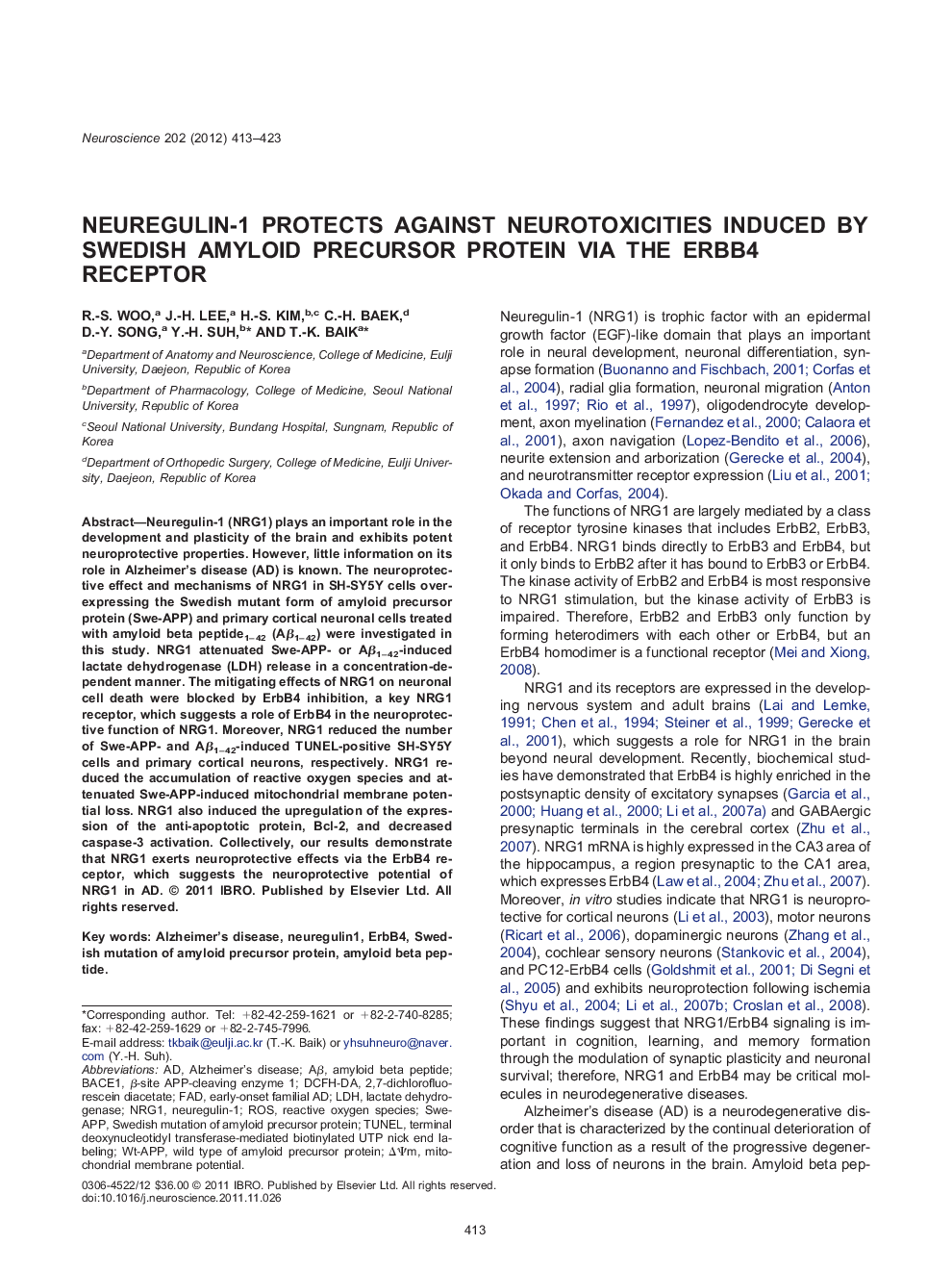| Article ID | Journal | Published Year | Pages | File Type |
|---|---|---|---|---|
| 6275895 | Neuroscience | 2012 | 11 Pages |
Neuregulin-1 (NRG1) plays an important role in the development and plasticity of the brain and exhibits potent neuroprotective properties. However, little information on its role in Alzheimer's disease (AD) is known. The neuroprotective effect and mechanisms of NRG1 in SH-SY5Y cells overexpressing the Swedish mutant form of amyloid precursor protein (Swe-APP) and primary cortical neuronal cells treated with amyloid beta peptide1-42 (Aβ1-42) were investigated in this study. NRG1 attenuated Swe-APP- or Aβ1-42-induced lactate dehydrogenase (LDH) release in a concentration-dependent manner. The mitigating effects of NRG1 on neuronal cell death were blocked by ErbB4 inhibition, a key NRG1 receptor, which suggests a role of ErbB4 in the neuroprotective function of NRG1. Moreover, NRG1 reduced the number of Swe-APP- and Aβ1-42-induced TUNEL-positive SH-SY5Y cells and primary cortical neurons, respectively. NRG1 reduced the accumulation of reactive oxygen species and attenuated Swe-APP-induced mitochondrial membrane potential loss. NRG1 also induced the upregulation of the expression of the anti-apoptotic protein, Bcl-2, and decreased caspase-3 activation. Collectively, our results demonstrate that NRG1 exerts neuroprotective effects via the ErbB4 receptor, which suggests the neuroprotective potential of NRG1 in AD.
â¶NRG1 attenuated cell death induced by Swe-APP and Aβ1-42 treatment. â¶NRG1 reduced Swe-APP-induced ROS accumulation. â¶NRG1 attenuated Swe-APP-induced mitochondrial membrane potential loss. â¶NRG1 alters the protein levels of Bcl-2 and active caspase-3. â¶ErbB4 mediates the effects of NRG1 on neuronal cell death.
